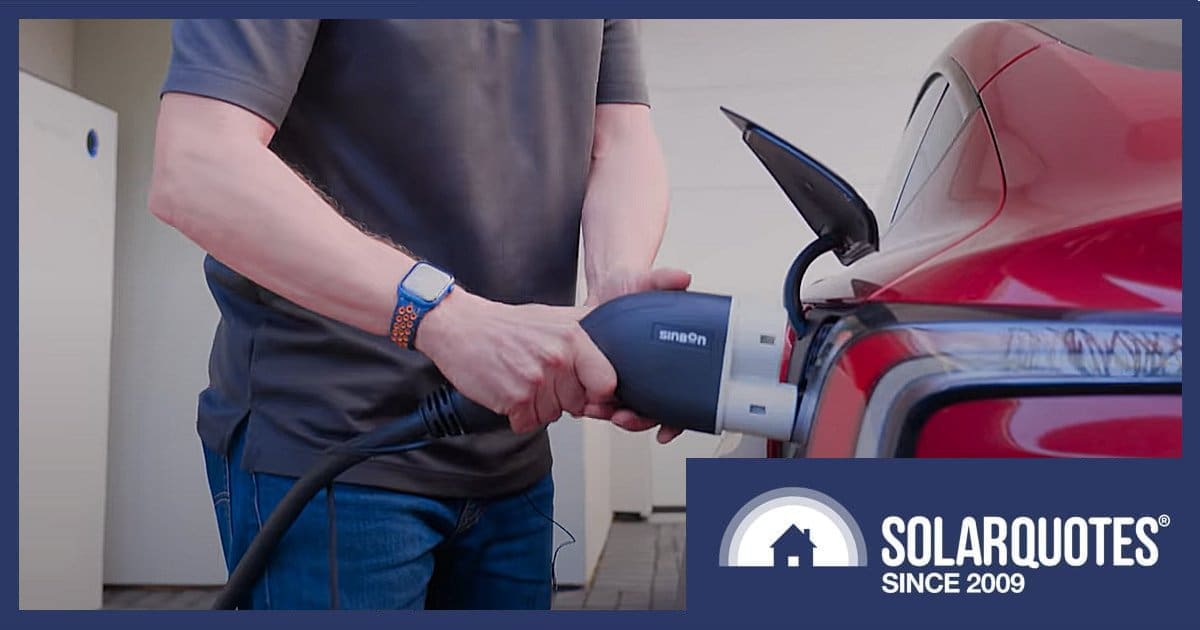

The Electric Vehicle Council (EVC) has made its case for expanding Australia’s home battery rebate program to include Vehicle-to-Grid (V2G) EV chargers.
Electric cars are essentially big batteries on wheels. For example, our BYD Atto 3 has a 60 kWh battery, which is more than 4.4 times the storage capacity of a Tesla Powerwall 3. The Atto 3 also has Vehicle-to-Load (V2L) features, meaning we can plug household appliances1 into a special adapter that connects to the charging port – our first experience with this was making an ‘Atto Espresso’.
But V2G, aka bidirectional EV charging, allows energy stored in EV batteries to be exported to the grid. Our Atto isn’t capable of this and very few EVs available in Australia are. V2G-capable chargers are also scarce and still incredibly expensive2, although pricing will drop as the tech evolves and more manufacturers get on board.
Manufacturers of bidirectional charging products have also had to battle Australia’s mish-mash of network connection policies and smart-grid integration architectures. But early this year, a National Roadmap for Bidirectional EV Charging was finally released, indicating what governments and industry need to do so EV batteries can be used to power homes and feed into the broader energy grid.
$3,000 V2G Charger Rebate Proposed
Assuming all the other ducks are lined up and to help boost uptake, the Electric Vehicle Council wants the federal government to include bidirectional chargers in its recently launched $2.3 billion home battery rebate program. The Council argues that such a rebate could provide good bang for buck.
“The modelling shows that over five years, a $3,000 government rebate towards a V2G charger would create more than $4,500 in downward pressure on electricity bills across Australia,” the organisation says. “That means for every dollar spent supporting V2G, $1.50 comes back through lower wholesale prices and a reduced need for additional capital expenditure on power infrastructure.”
In addition to the downward pressure on everyone’s electricity bills, the EVC says EV owners could earn $1,000 annually by sending energy from their cars to the grid.
“The EVC estimates that 600,000 EVs doing V2G could match the output of NSW’s Eraring power station operating at full capacity3,” states the Council. “With the federal government’s initiative, more Australians can get onto V2G quicker and we can shut down coal fired power stations sooner.”
Currently, there are around 350,000 EVs in Australia. While numbers should grow dramatically in the years ahead, not all of those owners would consider a bidirectional charger for reasons of cost (even with a rebate) or not being able to charge their EV at home for whatever reason. And some might prefer using their vehicle’s battery to supply their own home (V2H) rather than discharging it to the grid. Although that still has peak demand reduction benefits, so does installing a home battery.
The EVC’s proposal calls for the Cheaper Home Batteries program (which is uncapped) to include the rebates for 50,000 V2G chargers in homes around the country by the end of 2028. The initiative would cost $150 million, but create a national benefit of more than $230 million by 2033 the group says.
But Is V2G A Dead-End?
SolarQuotes founder Finn Peacock has previously stated he thinks V2G may be an expensive detour and a distraction; for example leading some Australians to hold off buying an EV (and missing out on savings) while waiting for something that might not eventuate in the form they want.
“… in reality, it’s all hassle, cost, and fiddliness — in exchange for pocket change and an illusion of control.”
He explains in greater detail why he currently views V2G as a furphy here. Note that the post was written just before the federal home battery rebate was originally announced.
Related: V2L, V2G, V2H, V2X …WTF?
Footnotes
- The Atto 3’s V2L has a continuous output capacity of 2.2 kW. ↩
- For example, the V2G/V2H capable module of the Sigenergy Sigenstor battery system starts at around $7,000. ↩
- Eraring has four 720 MW coal-fired units and one 42 MW diesel-fueled generator, for a total capacity of 2,922 MW. ↩
